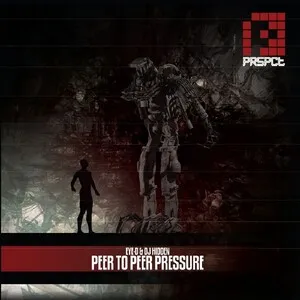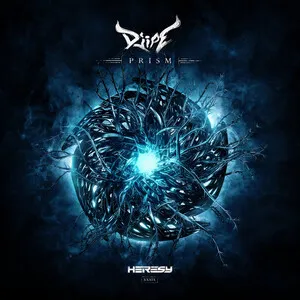Crossbreed (often called crossbreed drum and bass) is a hybrid of drum and bass and hardcore techno/gabber that fuses the half-time/breakbeat grammar of DnB with the relentless 4/4 impact and distorted kick design of industrial hardcore. Typical tempos sit around 170–180 BPM, keeping close to DnB speed while adopting hardcore’s long-tailed, heavily saturated kicks and metallic, industrial textures.
The style emphasizes aggressive sound design—Reese and FM basses, screaming leads/screeches, and dense, overdriven percussion—framed by DnB-style builds, drops, and breakdowns. Atmospheres are dark and cinematic, often drawing on horror, sci‑fi, and dystopian aesthetics. The result is music that feels simultaneously rolling and stomping, combining broken-beat groove with a punishing four-on-the-floor engine.
Crossbreed emerged in the late 2000s as producers sought a rigorous, codified way to combine drum and bass with hardcore techno/gabber. Dutch duo The Outside Agency (Eye-D and DJ Hidden) were pivotal, producing at DnB tempo while importing hardcore’s signature distorted 4/4 kicks and industrial atmosphere. Their output—and the term “crossbreed” itself—helped define a clear aesthetic beyond occasional one-off hybrids.
Between roughly 2008 and 2012, the sound crystallized. Labels like Genosha One Seven Five (a 175 BPM‑oriented offshoot from The Outside Agency’s camp) and PRSPCT Recordings (Rotterdam) became meeting points for DnB and hardcore communities. EP series such as “Crossbreed Definition” codified the genre’s templates: DnB arrangements, break edits, and drops fused with hardcore’s kick architecture, saturation, and bleak tonal palette.
Producers including Switch Technique, Lowroller, Cooh, Counterstrike, Katharsys, and Gancher & Ruin began exploring the format in earnest, while PRSPCT events and compilations broadcast the sound across Europe. The cross-pollination also aligned with darker DnB strains (techstep, darkstep, skullstep) and industrial hardcore lines.
Rotterdam (Netherlands) became a de facto hub thanks to PRSPCT’s parties and releases, with Genosha/Genosha One Seven Five providing a parallel, highly curated pipeline. The genre soon found allies in Eastern and Southern Europe, where hardcore and heavy DnB already had strong grassroots appeal. Crossbreed slotted naturally into events that were open to both scenes, giving DJs material that could bridge rooms and lineups.
Through the 2010s, crossbreed remained a niche but durable subculture, characterized by focused labels, DJ crews, and specialized festival stages. Production standards rose—cleaner yet harder kicks, tighter mix balance between bass and kick, and more sophisticated sound design—while the aesthetic stayed uncompromisingly dark. The style also fed back into parts of hardcore (and some uptempo strains), influencing how distorted kick design and breakbeat elements were combined in modern sets.








